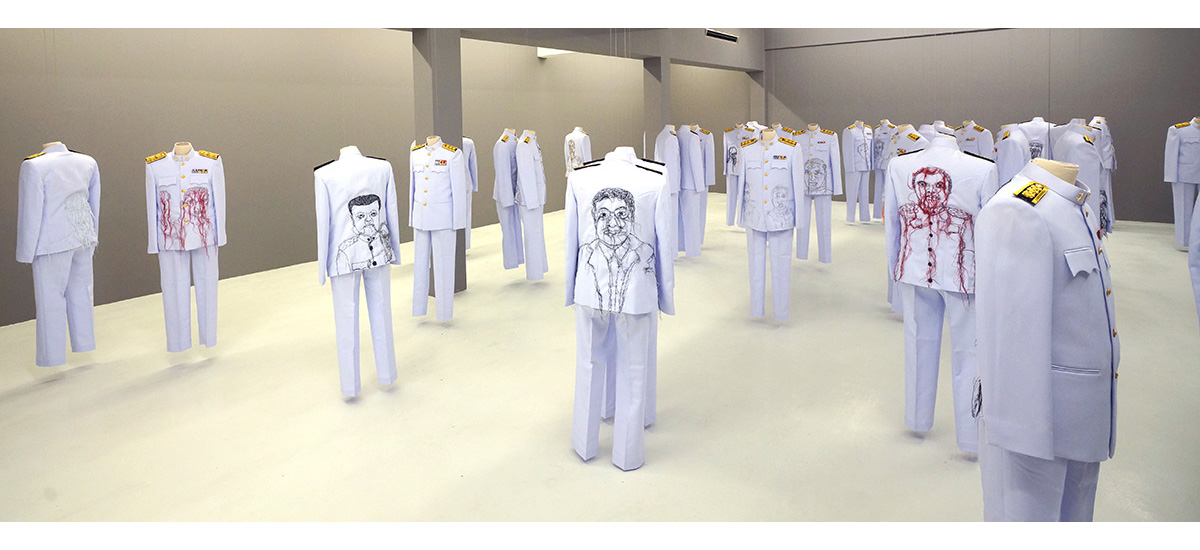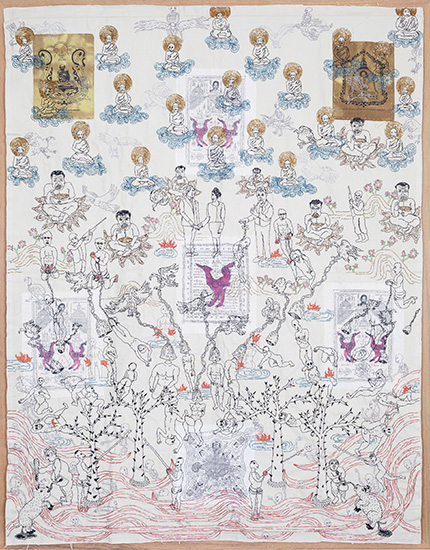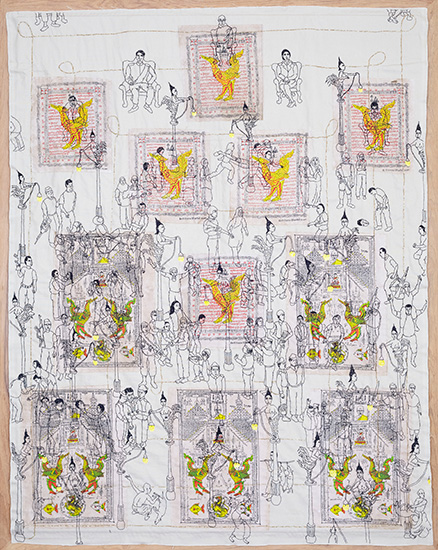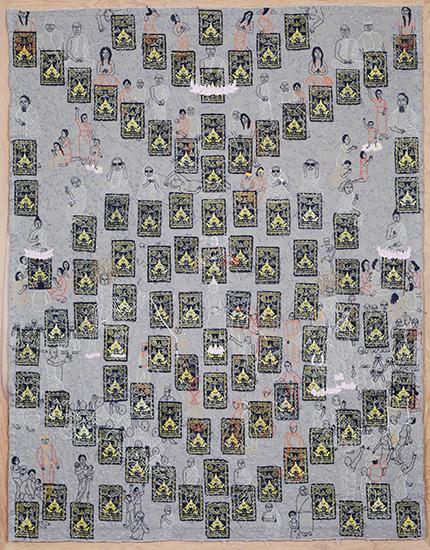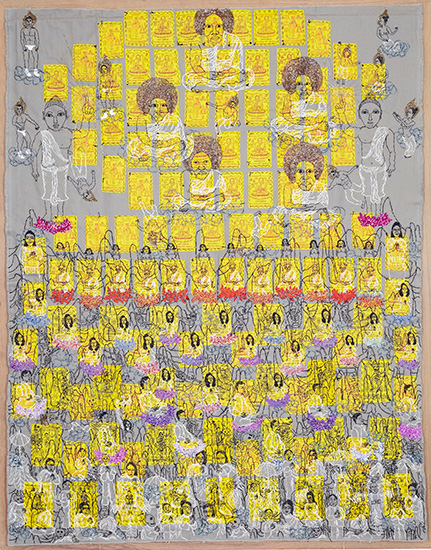Bangkok-based Jakkai Siributr (b. 1969) is known as a textile artist. However, his practice is less defined by medium than by ideas pertaining to Thai society as it confronts 21st century reality. Startled by the Kingdom’s transformation after his return from a decade’s study overseas in the early 2000s, Jakkai, like other seminal artists of his generation, is particularly aware of the great cultural and political shifts that have taken place since the end of the Vietnam War. The 1980’s and 1990’s in Thailand were marked by increased urbanisation and the rise of consumer society, which in turn awoke new aspirations and searches for voice. Today, materialism, political instability, the future of the Thai monarchy, the evolving place and content of Buddhism, communal strife, and growing frictions between rural and urban populations, are central preoccupations in the Thai Kingdom. These are the themes that find their way into Jakkai’s idiosyncratic practice.
While not exclusively drawn to needle-work techniques and textile, Jakkai has gravitated toward cloth and stitching in recent years, for their ability to act as conceptual clues extending and underpinning his ideas. The softness and delicacy of tapestries and three-dimensional thread- based works serve as a foil for his exposés of political corruption, transforming beliefs, and cultural frictions. This juxtaposition of material fragility, references to traditional Southeast Asian handicraft, and raw subject matter centering on a Thailand in flux, conveys a quiet tension that lends a critical subtext to his pieces.
For his first solo exhibition in Singapore, Jakkai Siributr creates a new body of work comprising a three-dimensional installation and a series of hand-sewn tapestries. Entitled Rape and Pillage, the large-scale hanging installation breaks new ground for the artist. Building and expanding on his political musings of Evening News (2011), Jakkai once again examines Thailand’s turbulent political scene as the country lurches closer, but also often further, from the would-be democratic path adopted in 1932, when constitutional monarchy replaced the absolute. Rape and Pillage consists of 39 white polyester jacket and trouser uniforms of the Thai civil service, a reference to Thai parliamentarians in their role as supposed servants of the people. Each uniform is overlain with thread portraits of current and past members of parliament, including former prime ministers Abhisit Vejjajiva and Thaksin Shinawatra, as well as privy-council members. The piece is both literal and metaphoric in its readings, the artist asking his audience to consider and judge the current political system, its representatives, and the latters’ effectiveness in giving voice to Thai citizens.
The series of commissioned tapestries reprise themes previously explored in exhibitions in Asia and the United States, namely Thailand’s syncretic belief system amalgamating animist practices and Buddhism. In this sequence, Jakkai pictorially investigates heaven and hell as understood in the current Thai context, where superstition and materialism deform and re-shape old religious tenets. Using his trademark lively thread and sequin embroidery on a ground of Yantra fabric talismans, the artist questions moral outcomes as Thais grapple with social, political and cultural instability.
Jakkai Siributr (b. 1969) studied textile design at Indiana University, Bloomington and Philadelphia University. Beyond his gallery shows, his work has been included in exhibitions at the Asian Art Museum of San Francisco, San Francisco, USA; The Art Centre, Chulalongkorn University, Bangkok; the Asian Civilisations Museum, Singapore; the National Taiwan Museum of Fine Arts, Taichung, Taiwan, among other distinguished institutions. Plunder is his first solo exhibition in Singapore.
